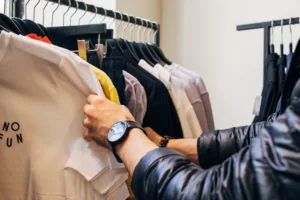ZigZag Global, a returns management software provider, that works with the likes of Selfridges, boohoo, and Zara, has found that at least 1 in every 5 purchases made in January was returned.
The data shows that the volume of returned goods over January 2023 was significantly higher than last year – up 14% – despite overall sales decreasing 3%. The surge brought on by pre-Christmas sales and heavily discounted offers caused returns mayhem in January with more than 1 return every second on Tuesday 3rd January.
The value of returned goods was also drastically higher this year compared to last. An increase of 33% and the overall value or returns was over £100 million – reflecting the 10% rise in the consumer price index over the past year.
Interestingly, it appears the choice from many retailers to charge for returns has not impacted consumer behaviours as paid returns increased by 122% against this time last year. This January paid returns represented over one-third (35%) of all returns made.
Consumers are also embracing different returns methods this year, with the number of returns made via lockers more than doubling (113%) and collection from home increasing by 29%. This reflects the lifestyle changes brought about by the pandemic, with more people still working from home and looking for more flexible returns options. There was also a slight dip in returns made via the Post Office (1%), which may have been impacted by the ongoing strikes.
The rise of popularity for using lockers is also a good sign in terms of sustainability as locker returns eliminate emissions from missed deliveries and makes courier journeys more efficient by travelling to a single location. It reflects the growth of the sustainable shopper and effort on part of retailers to provide easy access to a multitude of drop-off points, particularly in populated cities.
Commenting on the data findings, Al Gerrie, CEO at ZigZag added: “I expect to see some interesting changes in the retail industry throughout 2023. People are still spending during the promotions peak that January sales provides which is encouraging for retailers.
Furthermore, to see that paid returns have not hampered retail sales is also a positive sign and I expect to see more retailers looking to introduce paid returns and free returns to be used as an incentive or loyalty offer.
The changing behaviours in the way consumers make their returns just goes to show that retailers need to offer flexibility and choice. Lockers in particular are a great choice as they’re convenient for shoppers but will also reduce the impact of returns emissions on the environment – providing a greener option. Something we’re always looking for in retail and logistics as sustainability continues to take priority”.









